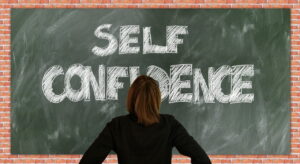Because today hypnosis is seen as a natural state of consciousness for the majority of human beings we can easily assume that hypnosis is as old as the present human race, Homo Sapiens. It is probably used by shamans, witch doctors, and other important advisors to local chieftains, and tribal leaders. It was only 400 years ago that the physician Mesmer made a first description of the phenomenon, and since then Hypnosis has been further developed into the widespread occurrence it has today.
Historic Times
Mesmer 1774

Nowadays hypnosis originates in the medical practices of Dr. Franz Anton Mesmer. He was a physician in Vienna, Austria.
He strongly believed that the influence of astronomy and magnets could influence human health.
After a magnetic treatment of a female patient, he developed a theory about “Animal Magnetism”, believing that each and every individual had a magnetic fluid flowing through the body, and that blockages caused disease, either emotional or physical.
By the end of the 1770’s Mesmer travelled to Paris where he found many interested students.
The methods Mesmer used was aimed to provoke in the sick person the kind of action beneficial to his recovery. So, people became hysterical, cataleptic, people got convulsions, palpitations of the heart, and perspirations. This caused a lot of stir in Paris.
Because of all the upheaval in Paris, by the mid 1780s, King Louis XVI commissioned a panel of scientists to examine Animal Magnetism as fact or fantasy. This panel had both medical doctors as well as respected scientists from other fields. Even Benjamin Franklin, Ambassador to France, was part of the panel.
After months of investigation and observation the panel concluded that any effects of Mesmer’s treatment were because of the imagination of the subjects, that there was no such thing as a physical fluid, or that the body contained previously undiscovered channels.
His reputation now in tatters, Mesmer went back to Vienna, to live out the remaining part of his life completely forgotten.
Although Mesmer had left, a number of his students continued his practice way into the 19th century, some of them adapting the underlying theories, making their own unique changes, and others earning a living with ‘Mesmerian’ stage shows.
In fact, we can call Mesmer the father of the Hypnosis Stage Shows.
Lucid Sleep
One of these students was Abbe Faria, who wrote a book in 1819 called “On the Cause of Lucid Sleep”.
This was about the concept that Mesmerism is a mental process of the subject, and he explained it as the result of a combination of “visual fixation” and “mental fatigue”.

Hypnotism & Hypnotist

The first person to use he words “Hypnotism” and “Hypnotist” was Etienne de Cuvillers, another student of Mesmer. These names were based on the Greek word for “sleep”.
Hypnosis for anesthesia

On April 12, 1829 Dr. Jules Cloquet was the first surgeon to use Hypnosis to replace anesthesia while performing surgery on a patient with breast cancer.
1841 James Braid
Dr. James Braid, a respected general surgeon in Manchester, England, went on to become one of the most important people in the history of Hypnosis.
He was the one who adopted the words “Hypnotism” and “Hypnotist” from Etienne de Cuvillers and used them in English. His writings and experiments made him the leading figure in Hypnosis in the English speaking world.
Because of his scientific approach and his willingness to engage in debate created a new and respectable face to Hypnosis.
This led to many new ways of thinking, talking, as well as to new studies and applications.

1885 Sigmund Freud

Born in 1856 Sigmund Freud was interested in neurology, and went to study in France. At the.end of his period he switched to psychology including hypnosis.
In the early years of his private practice he used hypnosis with many of his patients, using a dominant paternalistic style.
Later on he rejected hypnosis because according to him, it did not effectively removed the clients resistance.
Emile Coué
Emile Coué, born in 1857, owned his own pharmacy, and noticed the strong effects of placebos and positive suggestions.
He saw that people seemed to heal faster with positive recommendations.
He came to feel that suggestions repeated by the clients themselves were more effective and long-lasting.
He called it conscious autosuggestion or in our time, self-hypnosis.
He is the inventor of the slogan: “Every day, in every way, I’m getting better and better”.

1920 Modern Hypnosis
Hypnosis began expanding in the early 20th Century into many new areas, some of which unforeseen.
Stage Hypnosis

Many people got introduced to hypnosis through stage hypnosis on fairs and in theaters. One of them, Dave Elman, later became an influential hypnotherapist, and later wrote the classic manual “Hypnotherapy”.
He confirmed that hypnosis was a different state than normal sleep and that it did have a strong ability to reduce the perception of pain and alter memory.
Milton Erickson
He became one of the most famous hypnotherapists of this time. He used self hypnosis to overcome the pain and stiffness of the polio he got when he.was young.

Second World War
During the Second Word War hypnosis was widely used in many American army hospitals to treat psychological battle trauma, e.g. anxiety, fears, phobias and dissociation. The techniques used was reported to have achieved good results.
At Present
Nowadays, hypnosis is more and more seen as a powerful tool to achieve personal goals, and changes, and it is used for a wide variety of therapeutic treatments. For instance, hypnosis is used for pain management, to get rid of phobias, anxiety, and stress.




